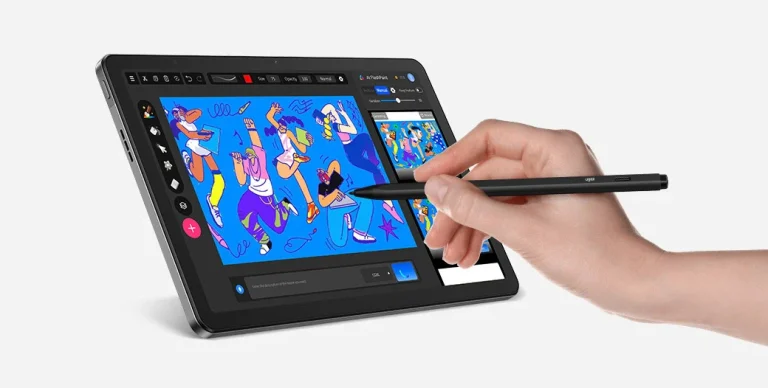In recent years, digital creativity has become more accessible than ever. From students sketching diagrams to professional artists designing full-scale illustrations, the tools we use to create have evolved significantly. Among these tools, the standalone drawing tablet has gained immense popularity for its portability, convenience, and all-in-one functionality.
Unlike traditional pen display tablets that require a computer connection, a standalone drawing tablet operates independently. This means you can sketch, paint, take notes, or design without needing to plug into another device. For everyday use, this independence makes a huge difference — whether you are working at home, traveling, or simply capturing inspiration on the go.
So, how do you choose the right standalone drawing tablet for your daily creative needs? Let’s explore the essential factors you should consider and why the XPPen Magic Drawing Pad is one of the most compelling options in today’s market.
Why Choose a Standalone Drawing Tablet for Everyday Use?
Before diving into the selection process, it’s important to understand why a standalone drawing tablet is ideal for daily life:
- Portability: No need to carry a heavy laptop or external accessories. A single tablet does it all.
- Convenience: Quick startup and ready-to-use interface let you create instantly.
- Flexibility: Great for both professional and personal use, from drawing and note-taking to editing photos or journaling.
- Productivity Boost: Everyday creativity becomes more consistent when your device is always with you.
This combination makes standalone tablets particularly useful for students, hobbyists, digital nomads, and busy professionals who want to stay creative no matter where they are.
Key Factors to Consider When Choosing a Standalone Drawing Tablet
Selecting the right standalone drawing tablet depends on a variety of factors. Here are the main elements to guide your decision:
1. Performance and Operating System
A good standalone drawing tablet should have enough processing power to handle demanding creative applications smoothly. Look at specifications like:
- CPU speed and efficiency.
- RAM (at least 6–8GB for smooth multitasking).
- Storage options (expandable storage is a plus).
The operating system is also crucial. Android-based devices often offer more flexibility and app options, while iOS provides seamless integration with Apple’s ecosystem. Windows-based standalone tablets are often chosen by professionals needing full desktop-grade software.
2. Display Quality
Since drawing is a visual activity, the display determines the overall experience. Consider:
- Resolution: Full HD or higher ensures crisp, detailed visuals.
- Color accuracy: Essential for artists and designers working on projects that require precision.
- Laminated screen: Reduces parallax between the stylus tip and the cursor, making drawing feel natural.
3. Stylus Responsiveness
The pen or stylus is the core tool of a drawing tablet. Look for features like:
- High pressure sensitivity (e.g., 8,192 levels or more) to capture fine details.
- Tilt recognition for shading and natural strokes.
- Low latency to ensure real-time response while sketching.
A high-quality stylus can make the difference between frustration and a smooth, paper-like drawing experience.
4. Battery Life
For everyday use, long battery life is non-negotiable. Ideally, your standalone drawing tablet should last a full workday without frequent recharging. Fast-charging capability is also valuable for creators who work on the go.
5. Software Compatibility
Make sure the tablet supports the creative apps you rely on. Clip Studio Paint, Krita, and other popular tools should run seamlessly. Some tablets even include built-in creative software for quick sketches or note-taking.
6. Weight and Portability
If you’re planning to carry your tablet daily, weight and size matter. A slim, lightweight design ensures you won’t feel burdened during commutes, travel, or long days at school.
7. Price and Value
Standalone drawing tablets range widely in price. While premium models like the iPad Pro can be costly, there are excellent mid-range options that deliver professional performance at more affordable prices. Balance your budget with the features you truly need.
Everyday Scenarios Where a Standalone Drawing Tablet Shines
To better understand why choosing the right tablet matters, let’s imagine a few daily situations:
- Morning Commute: Instead of scrolling through social media, you open your tablet and sketch concepts for a new project.
- In the Classroom: Replace multiple notebooks with a single device for notes, diagrams, and annotations.
- During Travel: Document your experiences through drawings or photo editing without carrying extra devices.
- At Work: Use the tablet for brainstorming, client presentations, or quick visualizations.
- Relaxation at Home: Unwind by doodling or practicing digital painting on the couch.
In each of these situations, a standalone drawing tablet allows creativity to flow naturally into daily routines.
Why the XPPen Magic Drawing Pad is a Great Choice
When it comes to balancing performance, affordability, and usability, the XPPen Magic Drawing Pad stands out as one of the best options on the market today. Here’s why:

- Designed for Portability
The Magic Drawing Pad is lightweight and slim, making it perfect for everyday carry. You can easily slip it into a backpack or bag without worrying about bulk.
- Vivid Display
It offers a high-resolution laminated screen with excellent color accuracy, ensuring every stroke looks sharp and lifelike. This feature is particularly beneficial for illustrators, designers, and anyone who values vibrant visuals.
- Advanced Stylus
Equipped with XPPen’s latest stylus technology, the Magic Drawing Pad provides high pressure sensitivity, tilt recognition, and minimal latency. Drawing feels as natural as using pen and paper.
- Strong Battery Life
With its long-lasting battery, you can rely on it for a full day of creative work without interruptions.
- Seamless Software Compatibility
The device supports a wide range of creative applications, from professional software like Photoshop and Illustrator to accessible tools for students and hobbyists.
- Great Value
Compared to other high-end standalone drawing tablets, the XPPen Magic Drawing Pad delivers exceptional performance at a more affordable price. This balance of features and cost makes it a strong contender for everyday users.
Standalone Drawing Tablet vs. Traditional Pen Display
You might wonder why not simply stick with a traditional pen display tablet. The answer comes down to independence:
- A pen display tablet relies on being connected to a computer. While this provides access to desktop software, it limits mobility.
- A standalone drawing tablet, like the XPPen Magic Drawing Pad, frees you from cables and computers. It’s more versatile for everyday life and spontaneous creativity.
If you value flexibility and convenience, a standalone device is often the better investment.
Conclusion: Choosing the Right Tablet for Everyday Creativity
Creativity doesn’t just happen at a desk. It happens on the bus, in classrooms, at coffee shops, or while traveling. That’s why choosing the right standalone drawing tablet is essential for everyday use.
When evaluating your options, consider display quality, stylus responsiveness, performance, battery life, software compatibility, and portability. Each factor ensures that your tablet enhances, rather than hinders, your creative flow.
Among today’s options, the XPPen Magic Drawing Pad shines as a device that balances portability, professional features, and affordability. It’s lightweight, powerful, and designed for artists, students, and hobbyists alike — making it an excellent choice for anyone seeking to integrate creativity into their daily life.
With the right standalone drawing tablet in hand, your imagination is no longer tied to a desk. Instead, it becomes a constant companion, ready to bring your ideas to life wherever inspiration strikes.

